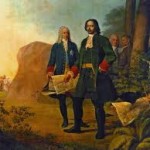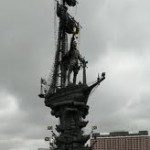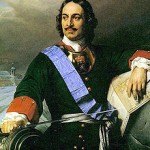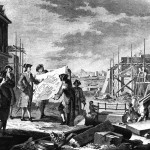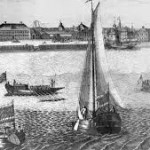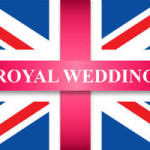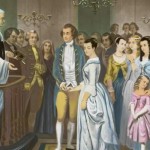Windsor is NOT the royal family’s real name.
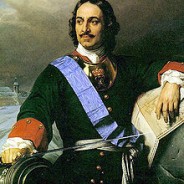
Windsor is NOT the royal family’s real name.
Sep 06
While on the subject of George of Cambridge from the House of Windsor, Windsor is NOT the royal family’s real name.
This royal household all descends from Queen Victoria and her husband, the Prince Consort, Albert of Saxe-Coburg and Gotha. So that is the family’s real name, Saxe-Coburg Gotha. Somehow, in 1917, while the British Empire was engaged in mortal combat with the Hun of Germany, where incidentally the Kaiser was also a grandchild of Queen Victoria, it just didn’t seem right to have a royal family with such a Germanic name. So in 1917, George V changed the family name from the German Saxe-Coburg Gotha to the English Windsor.
That’s not the only name change around that time in order to create distance from Germany.
When Peter the Great of Russia was determined to join the rest of the civilized and modern nations of Europe, he decided that he needed a port to give him access to shipping lanes. You have to remember that roads as we know them are really only about 75 years old. The US Army, determined to find out how long it would take to drive from New York to Los Angeles in 1914 spent the first 3 weeks just getting to Chicago. Until very recently, from a historical perspective, the best way to get around was train, and before that (as trains are only about 200 years old) waterways provided the best method of transportation for travel and commerce for thousands of years. Peter realized that if he was to modernize Russia, and turn her face outwards toward the world, he needed a port; and he just didn’t have one. So he built one at the only point where he could reach a main body of water, The Gulf of Finland. Peter called his new city, no doubt with tremendous modesty, St. Petersburg, or the city of St. Peter in German.
Comes the World War, and incidentally the Russian Tsar, Nicolas II, was also a grandchild of Queen Victoria, and it seems wrong to have the capitalcity carry a German name. The name was russified to Petrograd, Russian for Peter’s City.
Along comes the revolution and the Soviets again rename the city, this time in honor of their leader, Vladimir Ilyich Ulyanov, better known as Lenin. So Petrograd became Leningrad, Russian for Lenin’s city.
Communism falls, Lenin is out, and in 1991 the city changes its name back to St. Petersburg, symbolically putting behind them the long grey period under Soviet communism.
While I was at University of Pennsylvania, I was privileged to take the class of the famous professor of Russian History, Alexander Riasanovsky. Dr. Riasanovsky’s brother, Nicolas, was an even more renowned Russian historian whose 2011 death was written about in numerous newspapers, including the New York Times. Dr. Riasanovsky told the story that after the revolution, one of the first orders of business, after restoring order (read killing any opposition), was to take a census as no one knew how many people lived in Russia. Among the questions in the census, their fatheranswered in the following way:
Where were you born? St. Petersburg
Where were you educated? Petrograd
Where do you live now? Leningrad
Where do you want to live? St. Petersburg
If only his father could have lived to see St. Peterburg rise again out of the dull gray ennui that was Soviet Leningrad.

